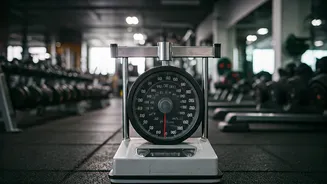Embrace Progressive Overload
The cornerstone of effective workouts often lies in the principle of progressive overload. This concept is fundamentally about consistently challenging
your body to adapt and grow stronger. This doesn't necessarily mean lifting heavier weights every time. It means gradually increasing the demands placed on your muscles over time. It could involve adding a few extra repetitions to your sets, increasing the weight slightly, or even shortening rest periods. The body adapts to the stresses it's subjected to. If you consistently lift the same weight with the same number of reps, your body has no need to change, and the gains will plateau. Progressive overload ensures that your body is continually pushed beyond its comfort zone, promoting muscle growth, strength gains, and, importantly, calorie expenditure. So, each workout should be an opportunity to push your limits, whether subtly or more significantly.
Track Your Lifting Progress
Keeping a detailed record of your workouts is crucial for monitoring progress and making informed adjustments. Tracking your lifts provides a tangible way to see how you're improving. This data can include the exercises you perform, the weight you lift, the number of sets and reps you complete, and the rest periods between sets. There are various ways to track this: a simple notebook, a spreadsheet on your computer, or fitness apps on your smartphone. The key is consistency. By carefully tracking your workouts, you can identify patterns, see what exercises are most effective for you, and ensure you're applying progressive overload effectively. Regular review of your workout logs will also help you identify areas where you may need to make adjustments. It might reveal that you need to vary your routine to work new muscle groups, or that you're not progressing in a particular exercise. Tracking allows you to make data-driven decisions about your training to achieve consistent results.











